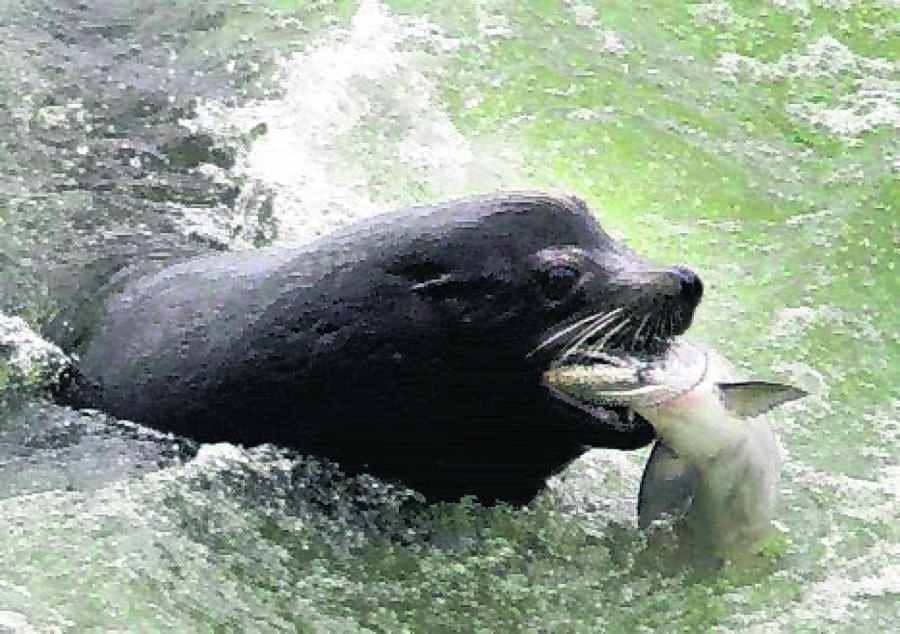For years, hundreds of California sea lions have colonized the docks in the Oregon port town of Astoria, their loafing brown bodies serving as both a tourist attraction and a nuisance begrudgingly tolerated by officials. Authorities have deployed deterrents — including beach balls, electrified mats and a mechanical orca — in futile attempts to scare off the pinnipeds without harming them, because they are protected under federal law.
But when it comes to sea lions that swim their way from the coast to inland rivers, Oregon officials are no longer feeling so indulgent. After years of nonlethal hazing efforts, the state wildlife agency is now seeking permission to kill them.
The sea lions are a target because of their voracious appetite for threatened and endangered fish. They gobble up so many winter steelhead at Willamette Falls, south of Portland, that state biologists say there’s a 90 percent chance the fish run will go extinct. If granted a special permit from the federal government, Oregon could trap and kill as many as 92 sea lions at the falls each year.
The conflict pits one protected species against another in an unusual battle that kill-plan proponents say is lopsided in favor of a thriving predator and that opponents say makes the species a scapegoat. Although hunting, bounties, habitat loss and pollutants caused the California sea lions’ population to drop below 90,000 in the 1970s, it has steadily risen since the 1972 Marine Mammal Protection Act and now numbers are nearly 300,000, or what the act calls “optimum sustainable population.” With the increase of the hulking animals has come tension over resources from beaches to fish.



